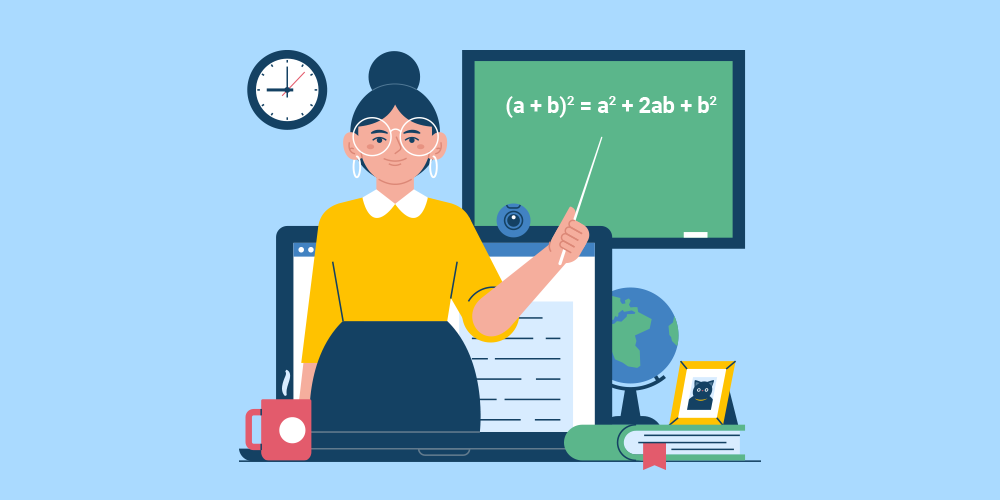Teaching with ChatGPT: How Theyre Using AI in Education
- admin
- 2023-06-22
- 8 min read

Overview of ChatGPT in Education
Contents
As the world embraces the digital age, the education sector is no exception. The integration of technology into the classroom has brought about a significant shift in teaching methods and learning experiences. One of the most promising innovations in this area is the use of ChatGPT. This cutting-edge AI technology is revolutionizing the way teachers and students interact, offering a myriad of benefits and opportunities to enhance the learning process. In this article, we will delve into the world of ChatGPT in education, providing an overview of its functionalities, advantages, and potential challenges.
With the continuous development of AI-driven tools, the landscape of education is being transformed, offering exciting possibilities for both educators and learners. ChatGPT, an AI language model, has emerged as a game-changer in this context, providing a plethora of applications that foster a more engaging, personalized, and effective learning environment . From classroom integration to research and project development, this powerful AI tool is making its mark on the educational realm. Join us as we explore the fascinating world of ChatGPT and its impact on education today.
What is ChatGPT?
Brief Explanation of ChatGPT
ChatGPT is an acronym for Chat Generative Pre-trained Transformer, a state-of-the-art artificial intelligence (AI) language model developed by OpenAI. It is designed to understand and generate human-like text based on the given input. As a versatile conversational AI, ChatGPT has found its way into various industries, including education. By leveraging this technology, educators and students alike can benefit from a range of applications, such as personalized tutoring, efficient grading, and collaborative learning. To explore more about its role in education, you can refer to the article chatgpt in education.
How AI is Transforming Education
The integration of AI in education has significantly changed the way teachers and students interact, learn, and collaborate. It has opened new avenues for personalized learning, enabling each student to receive tailored support based on their unique needs and abilities. Furthermore, AI-powered tools like ChatGPT can efficiently perform tasks that would otherwise require a considerable amount of time and effort from educators, such as grading assignments and providing feedback.
Additionally, AI can foster collaboration among students by facilitating group projects and encouraging peer-to-peer learning. The use of AI in language learning, research, and project development has also gained momentum, enhancing the overall educational experience. For an in-depth look at how ChatGPT is being utilized within the classroom, refer to chatgpt in the classroom .
In conclusion, the advent of AI in the educational sector, particularly with tools like ChatGPT, has the potential to revolutionize the way students learn and interact. With continued developments and careful considerations, the future of AI in education seems bright and promising.
Benefits of Using ChatGPT in Education
Enhanced Learning Experience
Integrating ChatGPT into educational settings can significantly improve the learning experience for students. With its ability to provide instant and accurate information, students can access a wealth of knowledge at their fingertips, allowing them to explore topics in depth and gain a deeper understanding of the subject matter. Furthermore, the interactive nature of ChatGPT promotes active learning, which encourages students to think critically and engage with the content, as opposed to passively absorbing information.
Personalized Tutoring
One of the most significant advantages of using ChatGPT in education is its capability to offer personalized tutoring. Each student has unique learning needs, and AI-driven tutoring can adapt to individual strengths and weaknesses. ChatGPT can provide customized explanations, answer questions, and even suggest additional resources based on a student’s learning style and preferences. This personalization helps students to overcome learning barriers and achieve better academic outcomes. For more insights, visit chatgpt for students .
Encouraging Collaboration
AI-powered tools like ChatGPT can foster collaboration among students and within the educational community. It can serve as a platform where students can share ideas, brainstorm solutions, and engage in group discussions. By promoting a sense of teamwork and allowing students to learn from one another, ChatGPT contributes to the development of essential interpersonal and problem-solving skills. Teachers can also utilize chatgpt for teachers to facilitate group activities and collaborative projects.
Efficient Grading and Feedback
Grading and providing feedback are time-consuming tasks for educators, but with the help of ChatGPT, these processes can be streamlined and made more efficient. AI-driven grading systems can quickly and accurately assess student work, reducing the time and effort required by teachers. Furthermore, ChatGPT can provide personalized feedback that addresses specific areas for improvement, allowing students to learn from their mistakes and make progress in their studies. This not only benefits students but also allows educators to devote more time to designing engaging lessons and attending to the individual needs of their students.
In conclusion, ChatGPT offers numerous benefits in the realm of education, from enhancing the learning experience to promoting collaboration and streamlining grading processes. As AI continues to advance and become more integrated into educational settings, students, teachers, and the entire educational community stand to benefit from these innovative technologies.
Real-World Examples of ChatGPT in Education
As artificial intelligence continues to shape various aspects of our lives, ChatGPT has found unique and impactful applications in the educational sector. In this section, we will delve into some real-world examples of how ChatGPT is being utilized to enhance learning experiences across different educational settings.
Classroom Integration
The integration of ChatGPT in the classroom has proven to be an invaluable tool for both teachers and students. Teachers can leverage this technology to provide instant feedback on students’ work, create engaging and interactive lessons, and facilitate group discussions. Students, on the other hand, benefit from personalized learning experiences, as ChatGPT can tailor its responses to their unique needs and learning styles. Furthermore, the AI can assist learners in understanding complex concepts and provide additional resources to deepen their knowledge.
Homework Assistance
Homework can be a daunting task for many students, but ChatGPT offers a helping hand through its ability to provide real-time assistance. Students can ask questions and receive instant feedback, allowing them to better understand the subject matter and complete their assignments with confidence. This technology fosters a more independent learning approach and encourages students to take ownership of their educational journey.
Research and Project Development
When it comes to research and project development, ChatGPT has proven to be an invaluable resource. Students can use the AI to gather information on a wide range of topics, identify reputable sources, and even generate ideas for their projects. ChatGPT’s ability to comprehend and analyze vast amounts of data makes it an ideal tool for providing insights and suggestions that might not have been considered otherwise. This can result in more thorough, well-rounded research and overall improved project outcomes.
Language Learning
One of the most exciting and practical applications of ChatGPT lies in the realm of language learning. As a powerful language model, ChatGPT can assist students in practicing their language skills, providing real-time feedback on grammar, pronunciation, and vocabulary. This interactive approach to language learning not only helps students gain a deeper understanding of the target language but also makes the process more engaging and enjoyable.
In conclusion, ChatGPT’s applications in education are far-reaching and diverse. From classroom integration to homework assistance, research and project development, and language learning, this AI technology has proven its efficacy in enhancing the educational experience for both teachers and students. As we continue to explore the potential of ChatGPT in education, it is crucial to address the challenges and considerations that come with its implementation, ensuring the technology is used responsibly and effectively.
Challenges and Considerations
As the use of ChatGPT in education continues to rise, certain challenges and considerations must be taken into account. These include ensuring appropriate content, finding a balance between human and AI interaction, and protecting student privacy.
Ensuring Appropriate Content
One of the primary concerns when implementing ChatGPT in education is the assurance of appropriate content for students. As AI language models can sometimes generate content that may not be suitable for a particular age group or educational setting, it is crucial for educators and administrators to monitor and filter the generated content. This can be achieved through a combination of human moderation and AI algorithms designed to detect and avoid inappropriate content.
Balancing Human and AI Interaction
Another challenge lies in striking the right balance between human and AI interaction. While ChatGPT can provide valuable assistance in various educational tasks, it should not replace the vital role that human educators play in guiding and nurturing students. Teachers must continue to engage with their students , provide emotional support, and foster critical thinking skills. The key is to integrate ChatGPT in the classroom in a way that enhances and complements human interaction, rather than replacing it.
Protecting Student Privacy
Incorporating ChatGPT into the educational process necessitates the use of student data, which raises concerns about privacy protection. It is crucial to establish strict data handling protocols and ensure compliance with data protection regulations such as the Family Educational Rights and Privacy Act (FERPA) and the General Data Protection Regulation (GDPR). Schools and educational institutions must work closely with AI providers to guarantee that student information is stored securely, encrypted, and only used for the intended educational purposes.
In conclusion, while the use of ChatGPT in education offers numerous benefits and opportunities for both students and teachers, it is essential to address the challenges and considerations that come with its implementation. By ensuring appropriate content, finding a balance between human and AI interaction, and protecting student privacy, educational institutions can leverage the power of ChatGPT to revolutionize the learning experience.
Conclusion
The Future of ChatGPT in Education
As we have explored throughout this article, ChatGPT is ushering in a new era of possibilities for the realm of education. The integration of artificial intelligence into various aspects of teaching and learning has already begun to demonstrate its potential in enhancing students’ experiences and outcomes.
Looking forward, the future of ChatGPT in education appears to be exceedingly promising. The technology continues to evolve and improve, allowing for more refined and effective applications in classrooms, homework assistance, research, project development, and language learning. As AI becomes increasingly sophisticated, we can expect to witness even greater advancements in the personalization and engagement of educational experiences.
However, it’s essential to be mindful of the challenges and considerations that come with incorporating AI into education. Ensuring appropriate content, balancing human and AI interaction, and protecting student privacy are all critical factors that must be addressed as we move toward a more technologically integrated future.
In conclusion, though there are obstacles to overcome, the potential benefits of using ChatGPT and other AI technologies in education are immense. By harnessing the power of artificial intelligence, educators, students, and institutions alike can revolutionize the way we approach teaching and learning, ultimately leading to a brighter and more informed future for all.
21K School
Read our latest education blogs here. We are pioneers in proffering personalised, affordable and high-quality lessons using an advanced learning platform.


Join Asia’s Leading Online School and Unlock
endless opportunities
Join Asia’s
Leading Online School
and Unlock endless opportunities

 Thailand
Thailand




